Piolets d'Or Announces the "Significant Ascents" of 2023
This list of 68 climbs is effectively a "long list" used to select nominees of the prestigious alpine award.
In a heartwarming tale, it might not have always been the adventure that was expected, but for these researchers, the rewards made all the hardship worth it.

The tent was completely flooded. There was at least an inch of standing water that had not been absorbed by the ratty twin mattresses that lived permanently inside.
“Looks like it’s the Land Cruiser for the night,” I said to my field partner, a heavy sigh carrying my words away.
Ulysse groaned, knowing sitting upright in a car, cocooned in a sleeping bag, was a guarantee for a sleepless night.
The rain had been unrelenting for nearly a week, and Ulysse and I had spent each morning layering up in rain pants, raincoats, and heavy muck boots. We knew it was a futile effort, that our gear was not meant to withstand ten hours of assault. We returned to our field house at the end of each day soaked through, and our gear would barely dry out overnight before we had to do it all again.
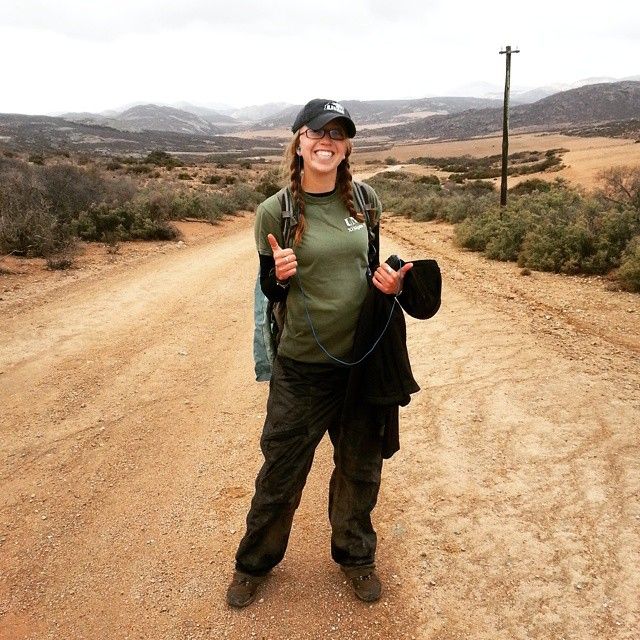
Now, it was our turn to trade the field house for the field tent, which sat in a sandy copse along a high ridgeline. Large boulders surrounded the tent, guarding it against the strong winds that whipped through each night, but a dearth of trees left it otherwise unprotected.
We worked in shitty conditions and lived in even shittier conditions.
The rain had finally relented, but our sad excuse for a field “house” was left even more battered than it already was from two years spent in the exact same spot. The sun’s powerful rays had stripped away the weatherproofing on the tent’s walls long before I arrived in Namaqualand. The tent’s poles were wrapped in duct tape in various spots—reminders of the more powerful wind storms that not even the boulders could guard against. Two old, mouldy twin mattresses served as the only anchors inside the tent—beneath the ground’s sandy surface sat impenetrable granite that no stake could defeat.

And now, those anchors, saturated with a week’s worth of rain, were as heavy as the boulders that surrounded the tent. Between that and the strong winds that blew through each night, sleeping outside was not an option. We were in for a long night in the field car.
I kicked a small rock and watched it roll off the cliff’s edge and into the desert far below. “We might as well make dinner,” I said, making note of the sun that was slowly sinking behind the distant granite cliffs.
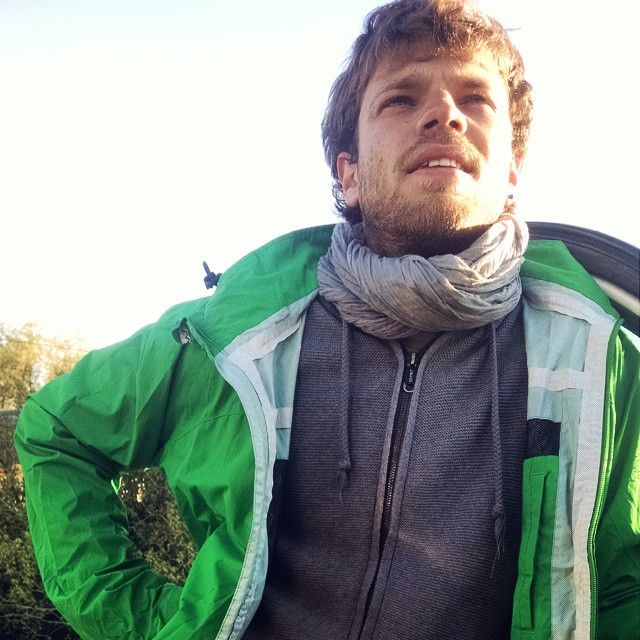
I heard Ulysse sigh behind me, an indication of his acceptance of defeat. We both knew there was nothing to discuss, no alternative plans to consider.
This was the nature of fieldwork. We worked in shitty conditions and lived in even shittier conditions. We prayed to Mother Nature for favorable weather and cursed her when she delivered the opposite. The work had to be done either way. We knew that to complain was to mark ourselves unfit for the job. We knew a person didn’t choose this field for the cushy lifestyle, the stellar pay, or the great benefits. Those were the unicorns of the wildlife world.
“I will try to start a fire,” Ulysse said in his thick French accent.
I walked back down the rocky path carved out by previous field technicians to where the car was parked, Ulysse following close behind. Methodically, we unpacked the Land Cruiser, placing the cooler in its usual spot beneath the one large ridgetop shrub, piling up firewood brought from the field house, and unfolding our camp chairs around the fire ring.
This was T2, and in the summer of 2015, it was my “home” every two weeks.
We were wildlife field researchers, Ulysse and I. We had moved to the northwestern cape of South Africa with nothing but a backpack each, high off the promise of handling the “big cat” species we dreamed of as children. In this case, it was leopards—my favorite species— and caracals, a bobcat-sized cat, and our job was to set foot-hold and snare traps to trap the cats and fit them with GPS collars.
T2 put us in range of about half of the research project’s traps. If we stood on the tallest rock on the ridgeline, our transceiver could pick up all twelve radio signals from the traps. By day, Ulysse and I wandered the Namaqualand desert, collecting data on site characteristics and predator kills based on the information received from the radio collars. By night, we checked the trap signals, rotating each hour to stand atop the rock and listen for the faint beeps coming through our transceiver.
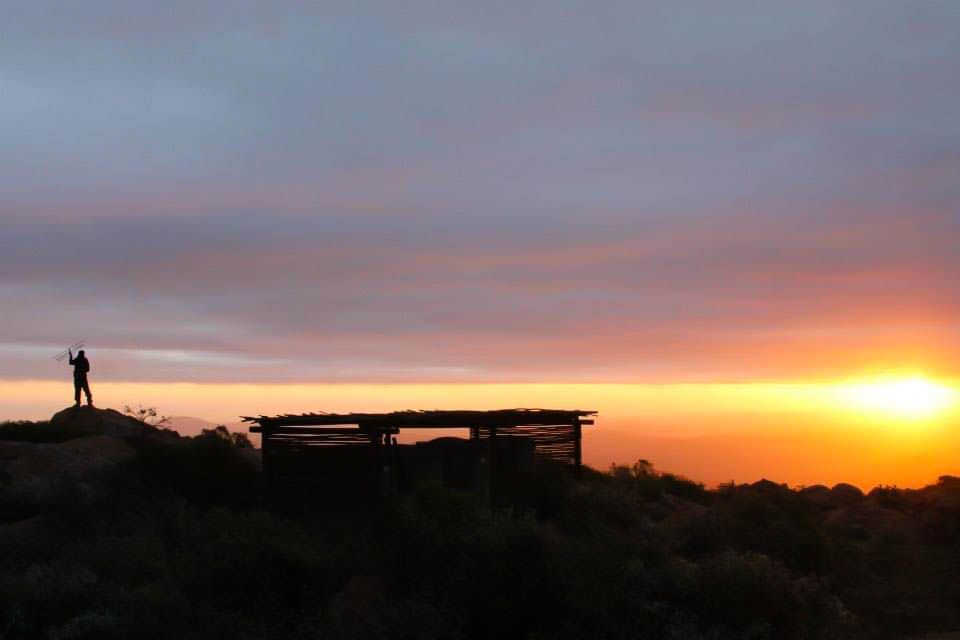
If a trap was triggered, the beeping would change from a slow, steady rhythm to a series of rapid beeps that generally incited both panic and excitement in the listener.
We don’t get paid enough for this shit
But this rarely happened. Two months into my four-month commitment, I had not touched—let alone seen—a single cat. My nights at T2 passed in the same pattern night after night: Ulysse and I discussed who was to take which hourly “shift,” we set our alarms, and we crawled into our sleeping bags. We slept fitfully, waking to each other’s alarms and groaning when it was our turn to stumble up the rock by headlamp.
“We don’t get paid enough for this shit,” I mumbled one day as I removed a two-inch thorn from my shin. I shook out my leg, waiting for feeling to return to it.
“We do not get paid at all,” Ulysse countered, reminding me that we had, in fact, volunteered for this job. Such was our desire to work with wildlife, particularly the wildlife of South Africa.
Five months earlier, after an hour-long Skype interview and a few days of back-and-forth emailing, I had committed to trading four months of paid work in the United States to four months of volunteer work in a very rural corner of South Africa—an area where Apartheid sentiment was still strong, where English was not the dominant language, and where foreigners were generally not welcome.
[gallery size="full" type="rectangular" ids="11993,11992,11990,11981"]
But the work would provide me with the chance to test the waters of my “big cat” dream. I needed to know how realistic it would be to pursue a career in the conservation of large cat species. These species lived in developing countries, where the language was different, the environment was unfamiliar, and the women had fewer rights than the men. I had no idea how to get my foot in the door, but this volunteer position seemed like a good first step.
And so it was that I found myself, five months later, swearing under my breath as I removed yet another large thorn from my body.
Ulysse and I were at the end of what had turned into an 11-hour day—covering over 16 miles—and my exhausted feet had carried me directly into a low-lying acacia bush. The pain of the two-inch thorn hitting my shinbone was what I imagined the pain of a snake bite to be. In my exhausted state, I spent a full ten seconds believing I had, in fact, been bitten by one of the many deadly snakes that inhabited this landscape.
[gallery type="rectangular" size="full" link="file" ids="11982,11986"]
As I pulled it out, part of the thorn snapped off, embedding itself beneath my skin. Blood began to run down my shin and soak into my sock. I sighed. Another future scar, I thought. My body was riddled with them, all from field work. Unforgiving plants, animal scratches and kicks, fumbles while using tools, accidents involving all-terrain vehicles—I had stories for them all and I fondly referred to them as “my collection.” My skin had become a diary for the work I dedicated my life to, and I revelled in the chance to share a story whenever someone pointed to a particular scar and asked, “How did you get that?”
I looked up at Ulysse and shrugged. Complaining or crying about the pain was useless—everyone in this field experienced their own version of it; I learned long ago not to expect sympathy from my peers. The only thing to do was continue our weary march to the Land Cruiser. The sun had set nearly an hour ago, which meant we were late. It was an unspoken rule to be back at camp before dark—all manner of dangerous creatures came out at night; to be out was to be putting ourselves at great risk, especially when cell-phone service and civilization were both tens of miles away.
[gallery size="full" type="rectangular" ids="11978,11980,11985,11987,11988"]
The sight of our field vehicle filled us with elation—the kind a person experiences on Christmas morning—and we stumbled into our seats with thoughts of dinner and a warm campfire. The drive back to camp at the end of each day was always a silent one, our bodies too weary to focus on anything but the beam of headlights that guided us.
It wasn’t until our bellies were full and our bodies warm that we would relive the moments of the day and share our thoughts and hopes for the coming days. The talk was always the same.
“I can’t believe the baboons stole the trail camera!”
“After we hiked 10 miles one way to collect it!”
“That’s going to leave a nasty scar.”
“Getting that porcupine out of the trap was so stressful, I thought for sure you were gonna get quilled.”
“I wish I had tried harder to climb that giant boulder.”
“I collected so much cat scat today, my pack literally smells like shit.”
“Catching that genet today was awesome!”
“Do you need another bandage?”
“I would rather shoot myself in the foot than do one more goddamn cluster survey.”
“I can’t believe we have to try to finish 12 cluster surveys tomorrow.”
“How amazing was that view today, though?!”
“I eventually gave up trying not to get pricked and just barreled through the thorns. It saved time, but boy do I regret it.”
“I really hope we catch a cat tomorrow.”
That last statement was a sentiment echoed day after day, week after week.
Finally, nearly nine weeks after I had arrived, the hope became reality. Ulysse and I crested one particular hill in the Land Cruiser and paused. About seventy yards down the dirt track, nestled off the road in the shade of a tree, sat a small rectangular cage trap. Something with a rusty coat was pacing back and forth inside it.
“Caracal!” I half-shouted, half-whispered. I turned to Ulysse, his excited expression mirroring mine.
“We finally caught one!” he exclaimed.
I dug for the satellite phone—always stored in the glove box, rarely used—and turned it on. Ulysse shut off the Land Cruiser while I typed out a short message.
Caught caracal. Trap 7. Time: 10:04am.
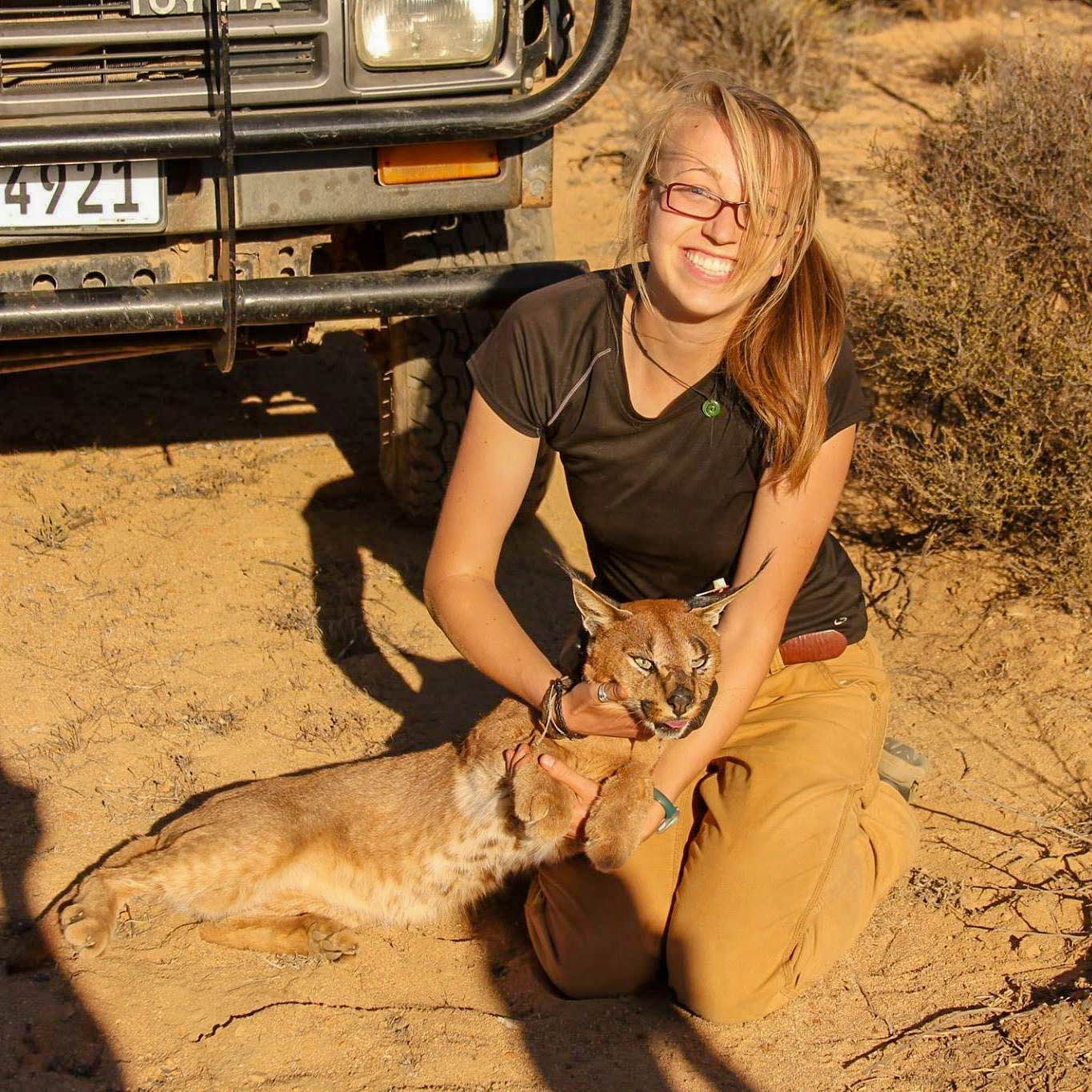
We prayed it would go through. Sending that message would pull the rest of the team—seven others—from their various locations and to our spot. For some of them, it would be our first time together in nearly two weeks, such was the spread of our field locations.
While we waited, Ulysse and I stepped out of the car to get a better look at the cat. Despite our distance from it, it was hissing and spitting at us like mad. Its teeth and claws were bared, and it frequently lunged at the steel frame of the trap, trying to force its body through the gaps.
My heart raced. I stared into the cat’s piercing yellow eyes, completely absorbed by the wildness in them. This is what I had come here for.
Soon we heard the rumble of the first field vehicle. After about 45 minutes, the entire crew and the on-call veterinarian were there. We watched the vet deliver a tranquillizer using a dart attached to a long pole, then waited with bated breath as the cat slowly slipped into unconsciousness.
Next came the science, the work we were all there for. The body measurements—the cat weighed only 30 pounds—the DNA samples, the ear tags, and the GPS collar. I held the collar in place while my coworker attached the screws, and I marvelled at the deep red color of the animal’s coat, the bright white of his teeth, the softness of his fur. He was beautiful, and I sat in awe of him.
I was drawn to wildlife because of this awe, because of the very definition of the word wild. I revelled in the unknown, in the lives of creatures whose worlds are wholly different from ours, in the languages we will never speak. I longed to see the world the way this caracal did, and, more importantly, I wanted to preserve his world for the generations that would follow him.
The GPS collars were to understand the cat’s movement patterns—his home range, den site, and habits. Local farmers, frustrated by the increasing number of predator-related deaths of their sheep, had been setting kill traps for the cats. Based on the number of cats that had been caught in the kill traps since the start of our research, the local population was at risk of serious decline. The role of my team was to learn as much about these cats as we could and work to implement deterrent strategies.
The same was true for the leopards we aimed to trap and collar, but given the endangered status of the species, the importance there was greater. The hatred of the species among farmers was greater there, too, which meant we were hated for trying to save them.
Knowing that I would go through it all again for another chance to stare into the golden eyes of such a wild thing
Through trail camera photos, we knew of at least four leopards who roamed Namaqualand, but they constantly eluded us. A pair—a mother and her kitten—watched from a distance as our supervisor set out foot-snare traps for them. Too smart to be fooled by the enticing bait, they never returned to that spot. Another leopard—collared in an earlier year of the study—managed to slip his GPS collar one day, after which he was only ever glimpsed in photos.
We never caught a leopard during my time with the team. Although disappointing, this spoke to the truly wild nature of the species, and I eventually found myself grinning at the thought of the cunning cats eluding our traps. I preferred it this way, knowing there were other ways to help the species.
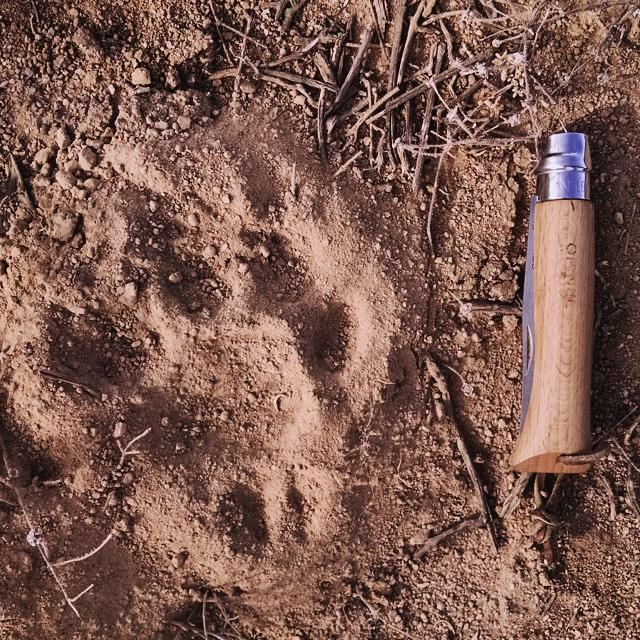
After the first caracal capture, we caught two more. Each capture filled me with the same awe as the first. With every release of the cat, my heart swelled with pride, knowing the animal would do wonderful things for science and that we were a part of it, knowing that the weeks of grueling work were worth it, knowing that I would go through it all again for another chance to stare into the golden eyes of such a wild thing.
The night that followed our first caracal capture, Ulysse and I returned to T2. We had eight clusters to get through the next day and traps to check remotely that night. Life was back to normal—monotonous, repetitive, and exhausting.
And yet. We had held a truly wild thing, and we were forever changed by it. We had felt the strong muscles that could bring down an animal weighing three times its body weight. We had glimpsed the sharp teeth that could tear through flesh, and we had run our fingers over the scars that marked the cat as both a fighter and a survivor. And we had stared into the wild and untamable eyes that spoke of a world we will never truly know, no matter how hard we try.
“I wouldn’t trade this for any amount of money in the world,” I said, breaking the silence of camp.
“Good,” Ulysse chimed in, “because we do not get paid for any of this.”
My heart was completely flooded.
All photos were taken by the author unless otherwise specified.
2nd best newsletter in the universe